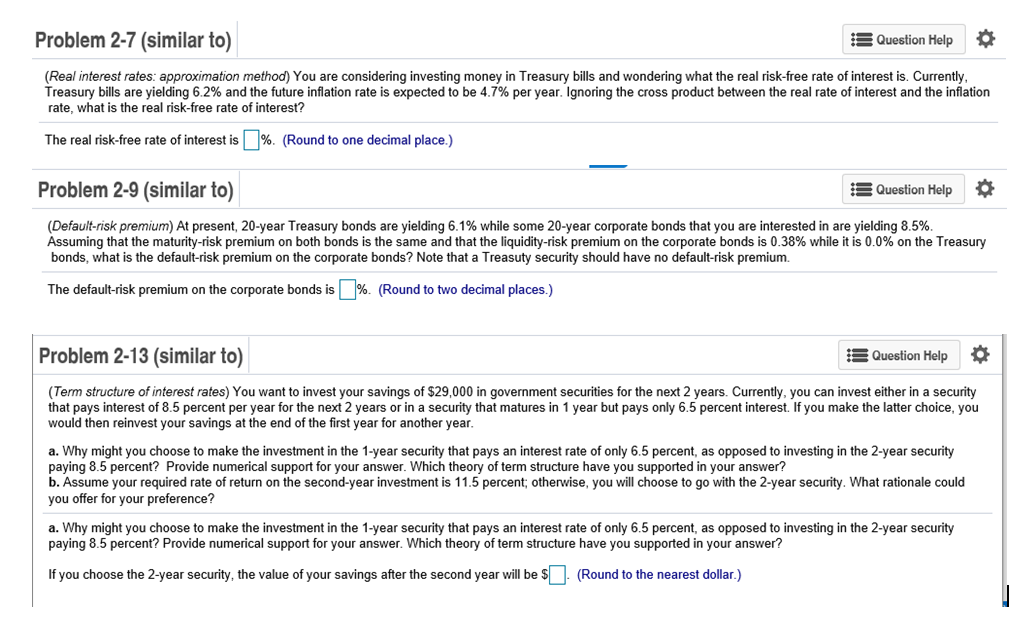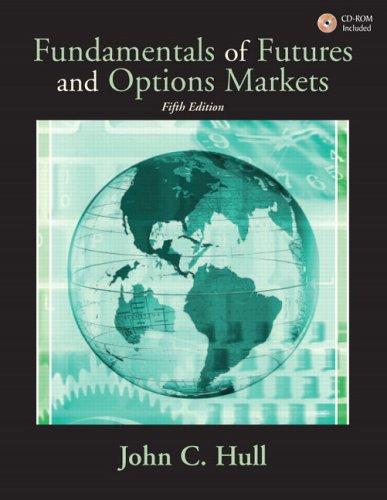
Problem 2-7 (similar to) Question Help (Real interest rates: approximation method) You are considering investing money in Treasury bills and wondering what the real risk-free rate of interest is. Currently, Treasury bills are yielding 6.2% and the future inflation rate is expected to be 4.7% per year. Ignoring the cross product between the real rate of interest and the inflation rate, what is the real risk-free rate of interest? %. (Round to one decimal place.) The real risk-free rate of interest is Problem 2-9 (similar to) Question Help (Default-risk premium) At present, 20-year Treasury bonds are yielding 6.1% while some 20-year corporate bonds that you are interested in are yielding 8.5% Assuming that the maturity-risk premium on both bonds is the same and that the liquidity-risk premium on the corporate bonds is 0.38% while it is 0.0% on the Treasury bonds, what is the default-risk premium on the corporate bonds? Note that a Treasuty security should have no default-risk premium. The default-risk premium on the corporate bonds is%. (Round to two decimal places.) Problem 2-13 (similar to) Question Help (Term structure of interest rates) You want to invest your savings of $29,000 in government securities for the next 2 years. Currently, you can invest either in a security that pays interest of 8.5 percent per year for the next 2 years or in a security that matures in 1 year but pays only 6.5 percent interest. If you make the latter choice, you would then reinvest your savings at the end of the first year for another year. a. Why might you choose to make the investment in the 1-year security that pays an interest rate of only 6.5 percent, as opposed to investing in the 2-year security paying 8.5 percent? Provide numerical support for your answer. Which theory of term structure have you supported in your answer? b. Assume your required rate of return on the second-year investment is 11.5 percent; otherwise, you will choose you offer for your preference? go with the 2-year security. What rationale could a. Why might you choose to make the investment in the 1-year security that pays an interest rate of only 6.5 percent, as opposed to investing in the 2-year security paying 8.5 percent? Provide numerical support for your answer. Which theory of term structure have you supported in your answer? f you choose the 2-year security, the value of your savings after the second year will be $ (Round to the nearest dollar.)







